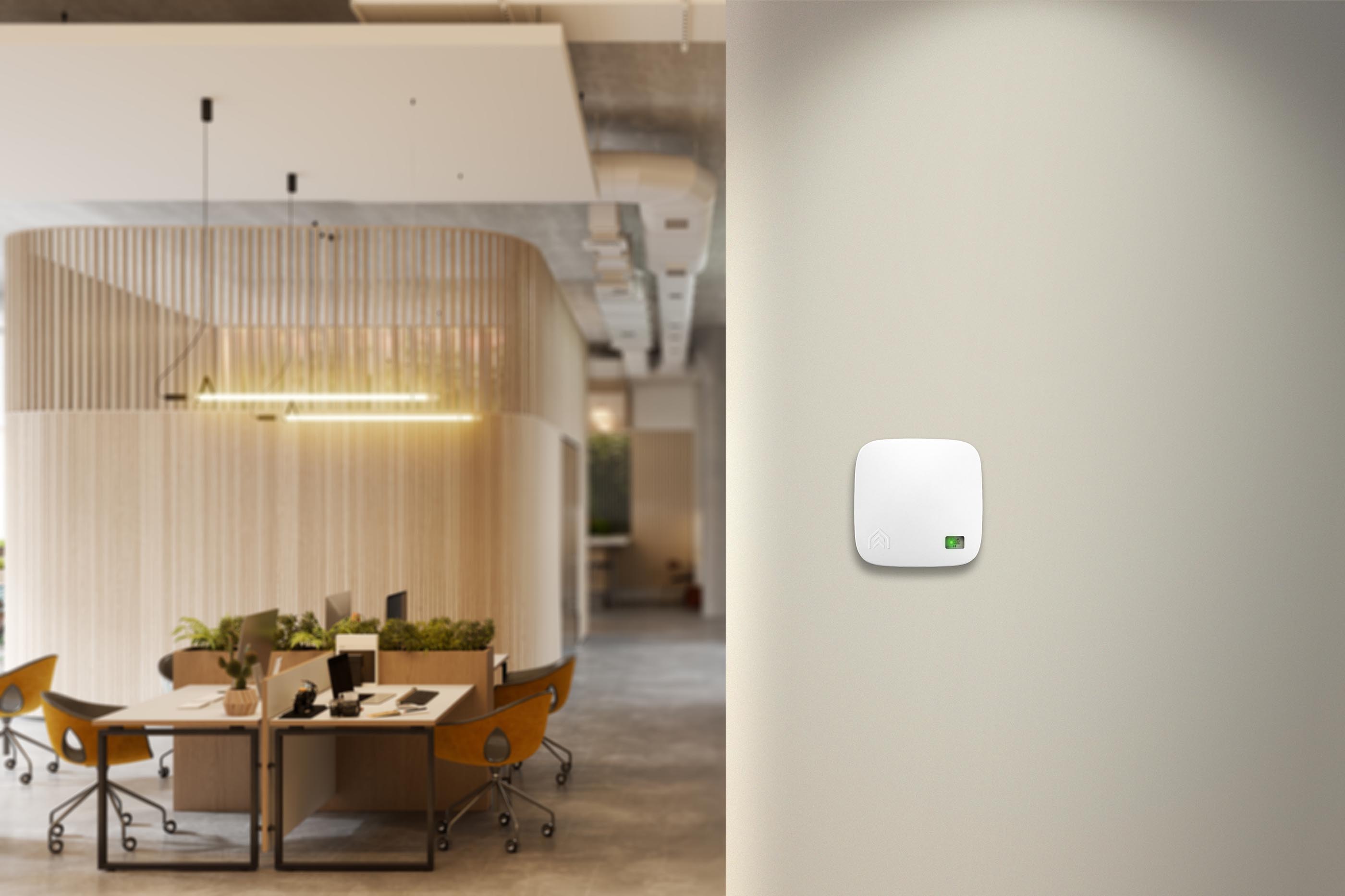
Support
Get help with setting up and using AirSuite sensors and software.
Our Recommendations
AirSuite provides the following healthy range recommendations for each attribute measured by your AirSuite sensors.
Temperature
Temperature should be kept in a fairly narrow range. When there are extremes of hot or cold, it becomes inefficient to heat or cool spaces, hard on health and unpleasant.
An indoor temperature of at least 18°C is recommended at all occupied times by The World Health Organisation (WHO).
Some studies suggest a minimum indoor temperature of 21°C for vulnerable groups, such as older people, children and those with chronic illnesses.
Temperatures below 18°C have been shown to have significant effects on cardiovascular function, particularly in children with asthma. Some evidence also suggests that lower temperatures can increase the risks associated with respiratory infections.
Humidity
Humidity is the amount of moisture in the air, typically expressed as Relative Humidity (RH), which is the moisture content relative to the total amount of moisture that can be held by the air at a given time.
The amount of moisture that can be held in the air depends on the temperature: warm air can hold more moisture, so if the temperature rapidly drops, the air will normally be more saturated, so the relative humidity will be higher.
When the air is fully saturated, the relative humidity is 100%. If the temperature drops further, the air can no longer hold all the moisture, and it will condense into water droplets. This is called the Dew Point.
The Absolute Humidity is an exact measurement of the amount of water in the air, expressed as the mass of water per volume of air.
Humid conditions (greater than 60% RH) can be physically uncomfortable, and allow harmful allergens to thrive, including bacteria, mould and mildew.
The optimal growth range for mildew is 70 to 93% RH. Relative humidity below 70% inhibits most mould growth, and below 62% prevents all mould growth.
Conversely, air that is very dry (less than 40% RH) can cause dry skin, throats and noses, and exacerbate skin conditions such as eczema.
Carbon dioxide (CO₂)
CO₂ is typically used to approximate indoor air quality by measuring the amount of air that has been breathed out by people in a room. It is a good indicator of how well ventilated a space is.
High CO₂ levels indicate that you may be re-breathing exhaled air. When you’re breathing in other people’s exhaled air, you’re also breathing in any viruses or bacteria they may be carrying.
CO₂ levels should ideally be kept below 800ppm. Higher levels are associated with reduced cognitive performance, and drowsiness. Levels above 2000ppm are associated with headaches, dizziness and nausea.
Volatile Organic Compounds (VOCs)
Volatile Organic Compounds (VOCs) are gases often emitted indoors from household items like cleaning products, craft materials and building supplies. Long-term exposure can cause skin and respiratory irritation. Concentrations of many VOCs are consistently higher indoors (up to ten times higher) than outdoors.
AirSuite sensors measure Total VOCs (tVOCs) — that is, the total concentration of all VOCs present in the air, measured in parts per billion. If VOC levels are consistently high, we recommend investigating the sources of those VOCs. If the levels are of particular concern, particulate matter samples should be taken and sent to a laboratory for analysis.
Most sensor manufacturers and health authorities agree that as a general guideline, tVOC levels should not exceed 500ppb. IBM considers indoor air to be poorly ventilated if tVOC in the air exceeds 220ppb and it advises the air becomes unhealthy when tVOC levels exceed 2200ppb.
The German Federal Environmental Agency provides the following guidance:
| Level | Hygienic Rating | Recommendation | tVOC (ppb*) |
|---|---|---|---|
| 5 Unhealthy | Situation not acceptable | Intense ventilation necessary | 2,222-5,555 |
| 4 Poor | Major objections | Intensified ventilation / airing necessary | 667-2,222 |
| 3 Moderate | Some objections | Intensified ventilation recommended | 222-667 |
| 2 Good | No relevant objections | Ventilation/airing recommended | 67-222 |
| 1 Excellent | No objections | Target value | Less than 67 |
* 1ppb of tVOC is roughly equivalent to 4.5µg/m³
Particulate Matter (e.g. PM2.5 and PM10)
Particulate matter (PM) is a complex mixture of solid particles and liquid droplets suspended in the air. PM is classified according to the size of the particles, with PM2.5 and PM10 being the most commonly measured, as shown here. PM is typically interpreted using the Mass Concentration, which is the total weight of particles present in a given volume of air, measured in micrograms per cubic meter (µg/m³).
AirSuite sensors with the Particulate Matter add-on support measuring the mass concentration for PM1 and PM2.5. PM4 and PM10 are also provided, though these are estimates derived from particle counts (number concentration) of PM0.5, PM1 and PM2.5, considering typical aerosol profiles.
Note that the measures for different sizes of particles (PM1, PM2.5, PM4 and PM10) are inclusive of all smaller particle sizes. For example, PM1 is the measure of all particles less than 1µm in size, PM2.5 is the measure of all particles less than 2.5µm in size (including all particles less than 1µm in size), and so on.
Mass Concentration represents the total weight of particles present in a given volume of air, measured in micrograms per cubic meter (µg/m³). This measurement provides information on the overall mass of particles, regardless of their individual size or number.
On the other hand, Number Concentration is a count of the actual number of particles within a given volume of air, regardless of their individual mass, expressed as the number of particles per unit volume of air.
Mass concentration and number concentration tend to be very closely correlated when there is a consistent distribution of particle sizes over time.
The World Health Organisation (WHO) recommends the daily average of PM2.5 should not exceed 15µg/m³ more than three days per year.
In the AirSuite Monitor Portal, the PM2.5 Daily Average graph (shown below) can help to easily identify non-compliance days.
Alerts
- Configure alert thresholds
- Email Notifications
- Manage Alerts
- Mobile App Notifications
- Our Recommendations
Connectivity
- Battery Life
- LTE Coverage Guide
- Over-the-air Updates
- Troubleshoot Inactive LTE devices
- Troubleshoot Inactive Wi-Fi devices
- Wi-Fi Access Point Compatibility
- Wi-Fi or LTE?


